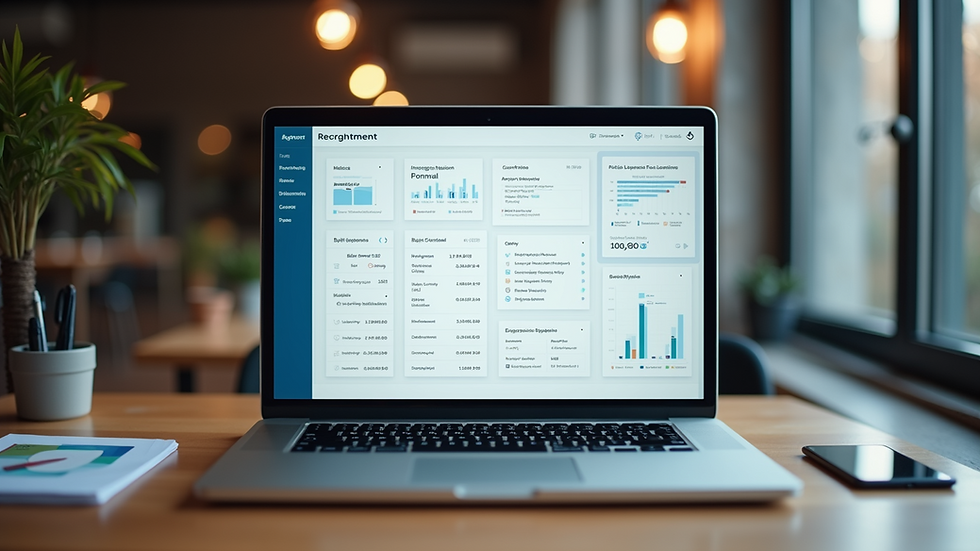The Benefits of Embracing a Modern Workplace Environment
- Anush Karthikeyan
- 13 hours ago
- 3 min read
In today’s fast-evolving business landscape, the concept of a modern workplace is transforming how organizations operate and how employees engage with their work. A modern workplace is not just about having the latest technology or trendy office furniture. It is a holistic approach that integrates technology, culture, and workspace design to foster productivity, collaboration, and employee well-being. Embracing this environment can bring numerous benefits to both employers and employees, making it a critical strategy for success in the 21st century.
Understanding the Modern Workplace and Its Impact
The modern workplace is characterized by flexibility, connectivity, and innovation. It leverages digital tools and platforms to enable seamless communication and collaboration regardless of location. This environment supports diverse work styles and encourages creativity and agility.
One of the key impacts of a modern workplace is improved employee satisfaction. When workers have access to the right tools and a supportive environment, they feel more empowered and motivated. For example, cloud-based project management software allows teams to track progress in real-time, reducing misunderstandings and delays. Additionally, open office layouts combined with quiet zones cater to different working preferences, enhancing focus and teamwork.

How a Modern Workplace Enhances Productivity
Productivity is at the heart of any business, and a modern workplace can significantly boost it. By integrating technology such as AI-powered analytics, automated workflows, and virtual meeting platforms, employees can accomplish tasks faster and with greater accuracy.
Moreover, the physical design of the workspace plays a crucial role. Ergonomic furniture, natural lighting, and designated areas for brainstorming or relaxation help maintain energy levels and reduce fatigue. For instance, companies that have introduced standing desks and wellness rooms report lower absenteeism and higher engagement.
Another important factor is the adoption of a flexible work culture. Allowing employees to choose when and where they work can lead to better work-life balance, reducing stress and burnout. This flexibility often results in employees being more focused and productive during their working hours.
The Role of Technology in Shaping the Modern Workplace
Technology is the backbone of the modern workplace. It enables remote work, real-time collaboration, and access to information anytime, anywhere. Tools like video conferencing, instant messaging, and cloud storage have become indispensable.
For example, virtual whiteboards allow teams to brainstorm ideas visually, even when members are scattered across different cities. AI-driven chatbots can handle routine queries, freeing up human resources for more complex tasks. Additionally, cybersecurity measures ensure that sensitive data remains protected in this interconnected environment.
Investing in the right technology not only streamlines operations but also attracts top talent who expect modern tools to support their work. Companies that lag in technology adoption risk losing competitive advantage and employee satisfaction.

Creating a Culture That Supports Innovation and Growth
A modern workplace is more than just physical space and technology; it is about cultivating a culture that encourages innovation and continuous learning. Organizations that foster open communication, recognize achievements, and support professional development create an environment where employees thrive.
Practical steps to build this culture include:
Encouraging cross-departmental projects to spark new ideas
Offering training programs and workshops on emerging skills
Implementing feedback systems that allow employees to voice opinions
Celebrating successes publicly to boost morale
Such a culture not only improves employee retention but also drives business growth by continuously adapting to market changes and customer needs.
Designing Workspaces for Well-being and Collaboration
The design of the workplace significantly influences employee well-being and collaboration. Modern workplaces prioritize comfort, accessibility, and inclusivity. Features like adjustable lighting, soundproof pods, and green spaces contribute to a healthier and more pleasant environment.
For example, incorporating plants and natural elements can reduce stress and increase creativity. Collaborative zones with comfortable seating encourage spontaneous discussions and teamwork. Quiet areas provide space for focused work or relaxation, catering to different needs throughout the day.
Employers should also consider accessibility features to ensure that all employees, including those with disabilities, can work comfortably and efficiently.
Moving Forward with a Modern Workplace Mindset
Adopting a modern workplace environment is a strategic move that benefits both the organization and its people. It requires commitment to continuous improvement, investment in technology, and a focus on culture and design.
By embracing these changes, companies can expect:
Enhanced employee engagement and satisfaction
Increased productivity and innovation
Greater flexibility to adapt to future challenges
Stronger employer brand and talent attraction
The journey to a modern workplace is ongoing, but the rewards make it a worthwhile investment for any forward-thinking organization.
Embracing a modern workplace environment is not just a trend but a necessity in today’s dynamic world. It empowers employees, drives business success, and creates a resilient foundation for the future. Organizations that prioritize this transformation will be well-positioned to thrive in the years to come.




Comments